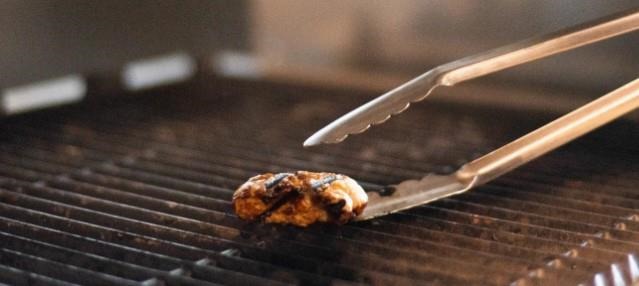Cash prices have been strong in 2022 with the average carcass base prices well above the five-year average. Figure 1 illustrates the national weighted average hog carcass base price paid by processors between January 2021 and June 2022. Prices paid for carcasses in January were near the five-year average and have increased through the first half of 2022.

Supply - Quarterly Hogs & Pigs Report
USDA publishes a quarterly report called the Quarterly Hogs and Pigs report. This report provides a detailed inventory of breeding and market hogs for each of the 16 largest hog producing states, accounting for nearly 95% of the total U.S. inventory. In addition to these 16 states, the report also estimates the combined total for all other states.
The June 29th report fell in line with analyst polls and confirms that contraction is happening in the hog industry. The report estimated all U.S. hogs and pigs on June 1 at 72.5 million, down 1% from June 1, 2021, and down only slightly from March 30, 2022. Market hog inventory came in at 66.4 million head, down 1% since last year, and down only slightly from last quarter. The number of hogs retained for breeding was 6.17 million head, down 1% from last year but up 1% from the previous quarter. Breeding hog inventory increased in four states: Iowa, Missouri, South Dakota and Texas. Nine states had losses.
The March-May 2022 pig crop came in at 32.9 million, down 1% from 2021. Sows farrowing during this quarter were down 1% from 2021 at 2.99 million head. These sows represent 49% of the U.S. breeding herd. Average pigs per litter was 11 for the March-May period. This is up slightly compared to 10.95 last year.
Figure 2 illustrates the U.S. inventory of all hogs and pigs (million head) on June 1 between 2013 and 2022. The inventory of all hogs and pigs on June 1, 2022, has dropped nearly 7% since the record 77.6 million head in 2020. The decline in the breeding herd is especially important because it is responsible for hog supplies in the future.

The Pig Cycle
Much like the cattle cycle, production cycles also exist in the hog business. The pig cycle is the expansion and contraction of hog inventory in response to economic changes in the business. When pigs have been profitable for a while, farmers increase production and take advantage of better profitability. During expansion, farmers hold back young female hogs (gilts), which leads to an increase in the pig crop after farrowing. Eventually the supply from expansion causes prices to drop. When prices drop, farmers respond by either producing less or exiting the hog business. More female hogs go to slaughter, and the expansion phase of the pig cycle comes to an end. The shape of the inventory can help farmers see where we are in that cycle.
Figure 3 illustrates the U.S. inventory of all hogs and pigs on March 1 from 1974 to 2022, including some examples of the pig cycle. The length of a cycle varies but typically takes three to five years. This is due to a couple of factors. First, the farmer needs a reason to change production. Usually this comes from a change in profitability. Second, the life cycle of a market pig is nine to 10 months. This is the amount of time it takes from conception to when new pigs reach market weight (280 lbs.). When profitability was low in 2019, farmers made the decision to cut back on production. This decision increased sow slaughter by 10.2% in 2020. Piglets from the reduced breeding herd reached market weight nine to 10 months later, resulting in a smaller hog inventory. This contraction phase of the cycle has been in place since the record 77.6 million head inventory in 2020.
Figure 3 illustrates the U.S. inventory of all hogs and pigs on March 1 from 1974 to 2022, including some examples of the pig cycle. The length of a cycle varies but typically takes three to five years. This is due to a couple of factors. First, the farmer needs a reason to change production. Usually this comes from a change in profitability. Second, the life cycle of a market pig is nine to 10 months. This is the amount of time it takes from conception to when new pigs reach market weight (280 lbs.). When profitability was low in 2019, farmers made the decision to cut back on production. This decision increased sow slaughter by 10.2% in 2020. Piglets from the reduced breeding herd reached market weight nine to 10 months later, resulting in a smaller hog inventory. This contraction phase of the cycle has been in place since the record 77.6 million head inventory in 2020.

Slaughter
Hog slaughter has been below 2021 levels for most of 2022. Figure 4 illustrates weekly slaughter of federally inspected hogs for 2021, 2022 and the five-year average. Slaughter has also been below the five-year average for much of the year. Slaughter for the week ending July 8 came in at 1.98 million hogs. This is 67,000 more than this time last year.

Demand
Demand for pork on both the global and domestic fronts is facing obstacles but continues to show strength. The cost of food is increasing for U.S. consumers and USDA forecasts U.S. per capita meat consumption will decrease modestly for 2022.
The USDA Cold Storage survey is a measure of reserve food supplies held in commercial and public warehouse buildings. The report estimated that total red meat in cold storage on May 31 was 1.087 billion pounds, down slightly from April, but 20% greater than last year. Pork accounted for 543.07 million pounds, down only 2% from last month but up 17% from last year. The change from month to month is only slight and reflects a seasonal decline from the peak grilling season demand. For more information, see the latest Market Intel on cold storage.
Click here to see more...